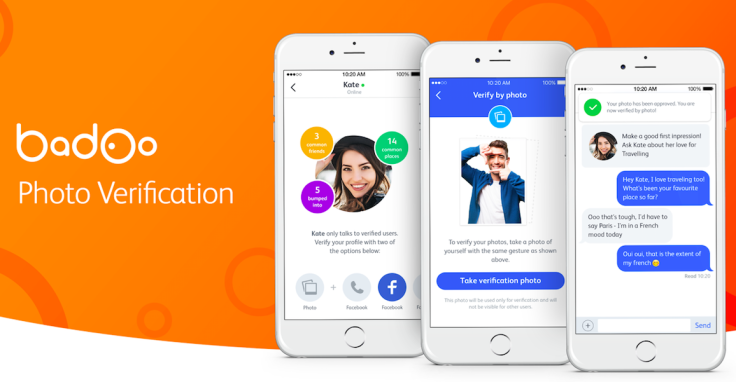Badoo Releases Photo Verification For Online Daters To Avoid 'Catfishing'

One dating app is on a mission to end “catfishing,” the term for someone having a fictional persona online and trying to get into a relationship. The answer: photo verification. The company: Badoo.
Badoo is a name many Americans have never heard of, but the dating service is trying to grow its presence in the U.S. It’s part of the reason the brand acquired LuLu, a dating app originally for anonymously ranking men and gained popularity in U.S. colleges, and brought on its founder Alexandra Chong as president last month. Soon, she and Badoo will be opening an office in New York, adding to the locations in Moscow and London.
“They’re not known as the biggest," Chong told International Business Times while sitting on the rooftop of the Soho House earlier this week. "Tinder was the one that caught the millennials."
But Badoo has an audience, and they’re actively engaged in the network. There are 300 million users in more than 190 countries and 400,000 new sign-ups per day for Badoo. Users spend on average 108 hours per day on the service and send 12 billion swipes per day. In comparison, Tinder users spend 90 minutes in app daily and send 1.4 billion swipes per day.
Now, Badoo is putting privacy and security by placing it at the forefront of the product. The new verification system allows users to submit a selfie with a requested pose. Then, Badoo’s team of more than 5,000 moderators worldwide — most of whom work for the company as freelancers — will check to make sure the submitted photo matches with the rest of the photos on the user’s profile page. Badoo claims the process will take under one minute.
A user can then choose if he or she wants to be matched only with verified users. Chong said she hoped this addition will make online dating more accessible and enjoyable. “We keep hearing that it’s a chore. It should be fun. Let’s get rid of the things that are icky and make you nervous,” Chong said.
Other dating apps, such as Tinder, pull a user's information from Facebook. That step adds a barrier to catfishing. A user would have to first create a fake Facebook account before they created a Tinder profile. Tinder did introduce verified accounts in July 2015 but only to notable public figures, celebrities and athletes.
Bumble — the app created by Tinder co-founder Whitney Wolfe and only allows women to message first — also added a verification feature in August 2015. But the badges are awarded to users for good in-app behavior, such as messaging quickly and not spamming.
Badoo, which oversees a suite of apps including Hot Or Not and Blendr, acquired LuLu last month. LuLu is on the phone of one in four female college students in the U.S., according to the company.
Like many dating apps, Badoo generates revenue by charging users for extra services. For example, one service lets premium users see when their messages have been read. Badoo's revenue was up by 63 percent last year.
Photo verification is one of several steps Badoo plans to take in the next year to make the online dating experience more authentic. Chong said they are thinking about introducing video messaging in the future. "Now that we've gotten over the taboo, we need to add the fun," Chong said.
© Copyright IBTimes 2024. All rights reserved.






















